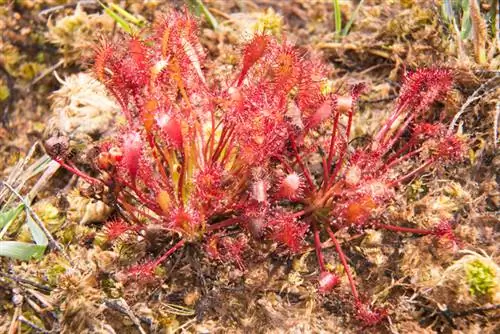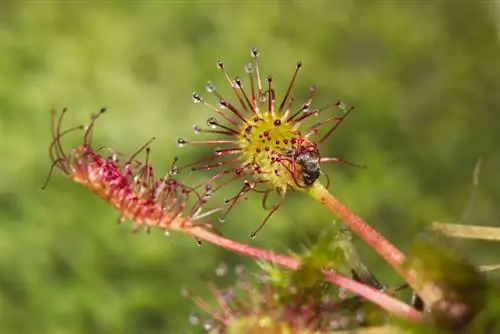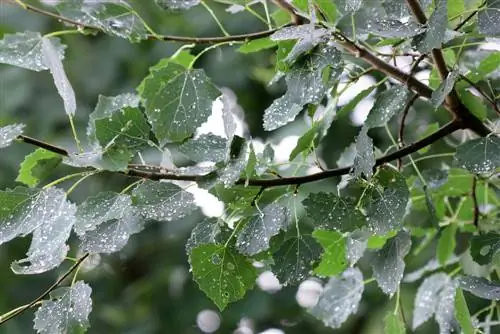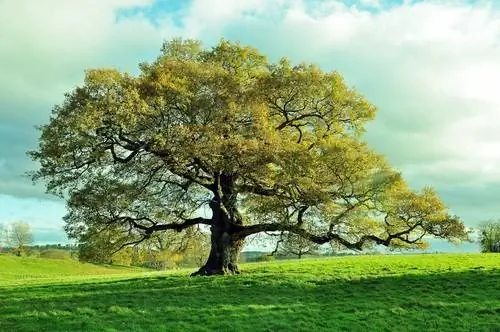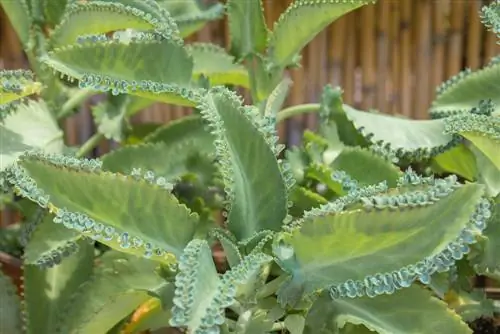- Author admin [email protected].
- Public 2023-12-16 16:46.
- Last modified 2025-06-01 06:02.
Growing carnivorous plants is an interesting hobby that is inspiring more and more gardening enthusiasts. There are numerous species that require very different conditions to thrive. The safety gears are also very different. A profile.

What are the characteristics of carnivorous plants?
Carnivorous plants include over 700 different species in 19 different genera, are perennial and thrive in moist, boggy locations. Well-known species include butterwort, sundew, pitcher plants, Venus flytrap and pitcher plant. They have various trapping mechanisms to use insects to provide nutrients.
Carnivorous Plants - A Profile
- Botanical name: depending on the species
- Species: over 700 species
- Genera: 19 known so far
- Occurrence: on all continents
- Safety gear: different depending on the species
- Locations: damp, boggy, occasionally in water
- perennial: yes
- hardy: native species yes, other species no
- Flower: different flower shapes
- Propagation: seeds, dividing, cuttings
- Use: houseplant, ericaceous plant
Known species of carnivorous species
- Fedwort (Pinguicula)
- Sundew (Drosera)
- Pitch Plants (Sarracenia)
- Venus flytrap (Dionaea muscipula)
- Pitcher Plant (Nepenthes)
With the exception of the Venus flytrap, all carnivores are represented in different species. The Venus flytrap is a monotypic species that has no subspecies.
Where are carnivorous plants found?
Carnivorous plants are found all over the world. Some grow quite frequently, others such as the Venus flytrap or the dwarf pitcher only occur in certain, very limited regions.
Five species are native to Germany:
- Water hose (Utricularia)
- Fedwort (Pinguicula)
- Sundew (Drosera)
- Waterfall (Aldrovanda)
- Pitch Plant (Sarracenia)
Carnivorous plants found in Germany are hardy and can be cared for outdoors. Almost all other species come from rainforests, tropical and subtropical regions. They are cultivated exclusively indoors.
Do carnivores actually eat meat?
Carnivorous plants grow primarily in locations that offer hardly any nutrients. The plants have therefore developed fishing devices with which they can catch insects and small spiders. These are then decomposed and the nutrients are released.
The safety gears can look very different. In sundews and butterworts they consist of leaves that are coated with a sticky liquid. Insects stick to it and are then decomposed.
The Venus flytrap has a folding trap that traps the animal. Pitcher plants form pitchers that are filled with secretion. Flies and other insects fall in and are digested. In pitcher plants, the leaves form funnels that attract and trap insects.
Tip
Even though carnivores consume fruit flies, mosquitoes, ants, spiders, flies and wasps, they are only of limited use in combating insects.

